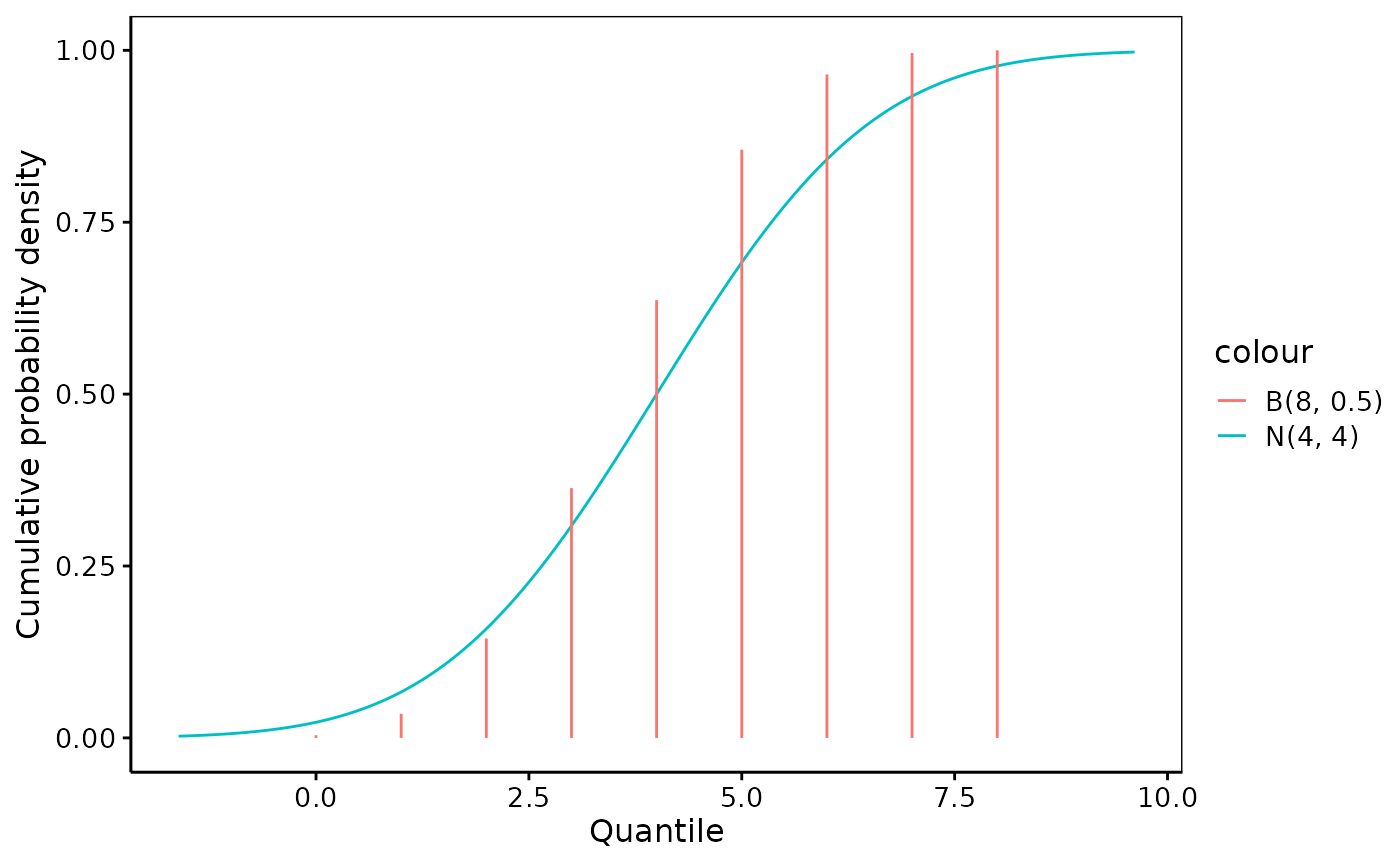
The distribution objects represent one or more statistical distributions.
The functions dfun() and geom_funfill(), together with chart() allow to
plot them.
dfun(object, i = 1)
cdfun(object, i = 1)
# S3 method for class 'distribution'
autoplot(
object,
n = 500,
xlim = NULL,
size = 99.5,
xlab = "Quantile",
ylab = if (type == "density") "Probability density" else
"Cumulative probability density",
plot.it = TRUE,
use.chart = FALSE,
...,
type = "density",
theme = NULL
)
# S3 method for class 'distribution'
chart(data, ..., type = "density", env = parent.frame())
geom_funfill(
mapping = NULL,
data = NULL,
fun,
from,
to,
geom = "area",
fill = "salmon",
alpha = 0.5,
...
)Arguments
- object
A distribution object, as from the {distributional} package.
- i
The distribution to use from the list (first one by default)
- n
The number of points to use to draw the density functions (500 by default) of continuous distributions.
- xlim
Two numbers that limit the X axis.
- size
If
xlim=is not provided, it is automatically calculated using the size of the CI between 0 and 100 (99.5 by default) for continuous distributions.- xlab
The label of the X axis ("Quantile" by default).
- ylab
The label of the Y axis ("Probability density" or "Cumulative probability density" by default).
- plot.it
Should the densities be plotted for all the distributions (
TRUEby default)?- use.chart
Should
chart()be used (TRUEby default)? Otherwise,ggplot()is used.- ...
Further arguments to
stat_function().- type
The type of plot ("density" by default, or "cumulative").
- theme
The theme for the plot (ignored for now).
- data
The data frame to use (
NULLby default).- env
The environment to use to evaluate expressions.
- mapping
the mapping to use (
NULLby default.- fun
The function to use (could be
dfun(distribution_object)).- from
The first quantile to delimit the filled area.
- to
The second quantile to delimit the filled area.
- geom
The geom to use (
"area"by default).- fill
The color to fill the area (
"salmon"by default).- alpha
The alpha transparency to apply, 0.5 by default.
Value
Either a function or a ggplot object.
Examples
library(distributional)
library(chart)
#> Loading required package: ggplot2
#> Loading required package: lattice
di1 <- dist_normal(mu = 1, sigma = 1.5)
chart(di1) +
geom_funfill(fun = dfun(di1), from = -5, to = 1)
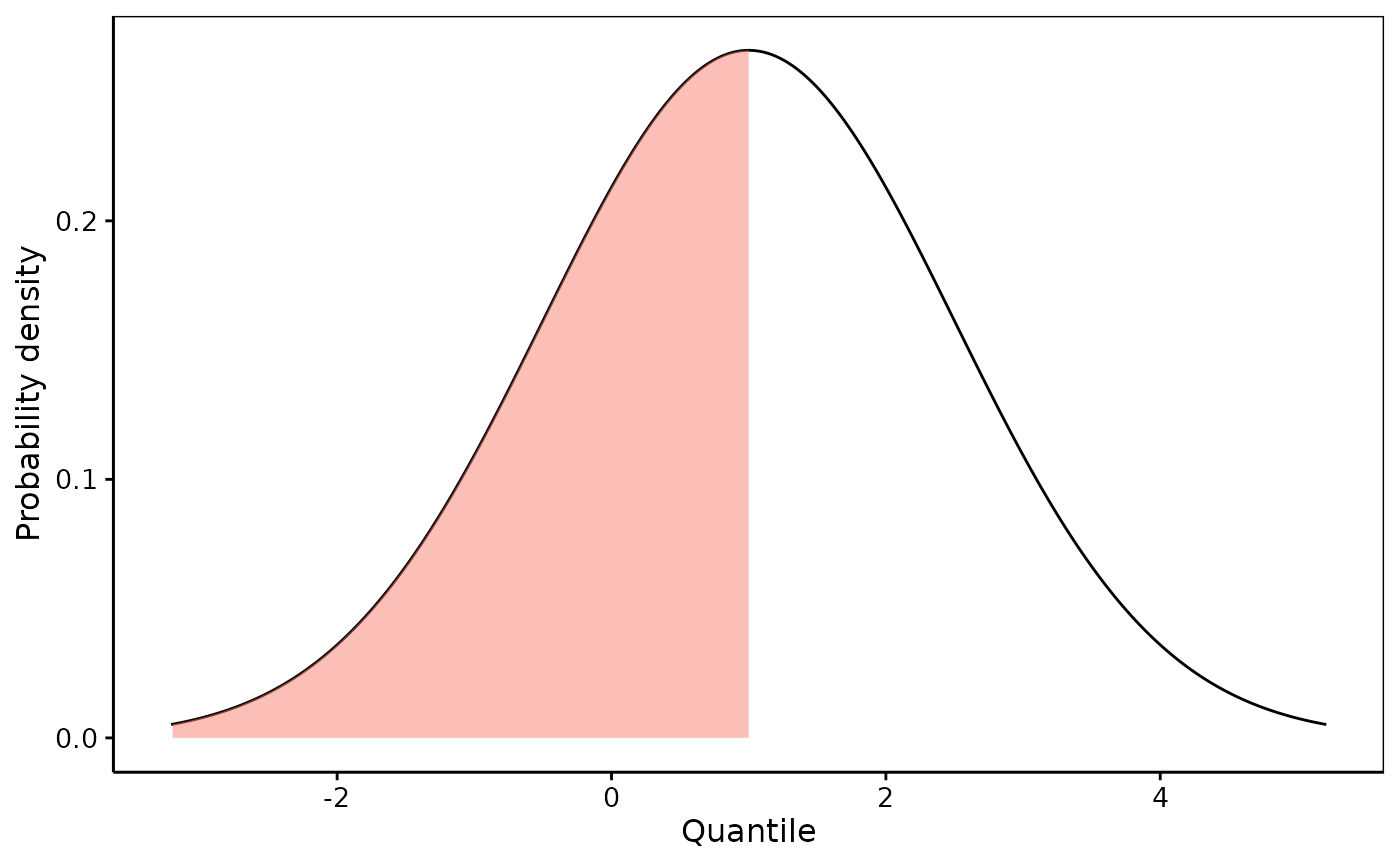 # With two distributions
di2 <- c(dist_normal(10, 1), dist_student_t(df = 3, 13, 1))
chart(di2) +
geom_funfill(fun = dfun(di2, 1), from = -5, to = 0) +
geom_funfill(fun = dfun(di2, 2), from = 2, to = 6, fill = "turquoise3")
#> Warning: no non-missing arguments to max; returning -Inf
# With two distributions
di2 <- c(dist_normal(10, 1), dist_student_t(df = 3, 13, 1))
chart(di2) +
geom_funfill(fun = dfun(di2, 1), from = -5, to = 0) +
geom_funfill(fun = dfun(di2, 2), from = 2, to = 6, fill = "turquoise3")
#> Warning: no non-missing arguments to max; returning -Inf
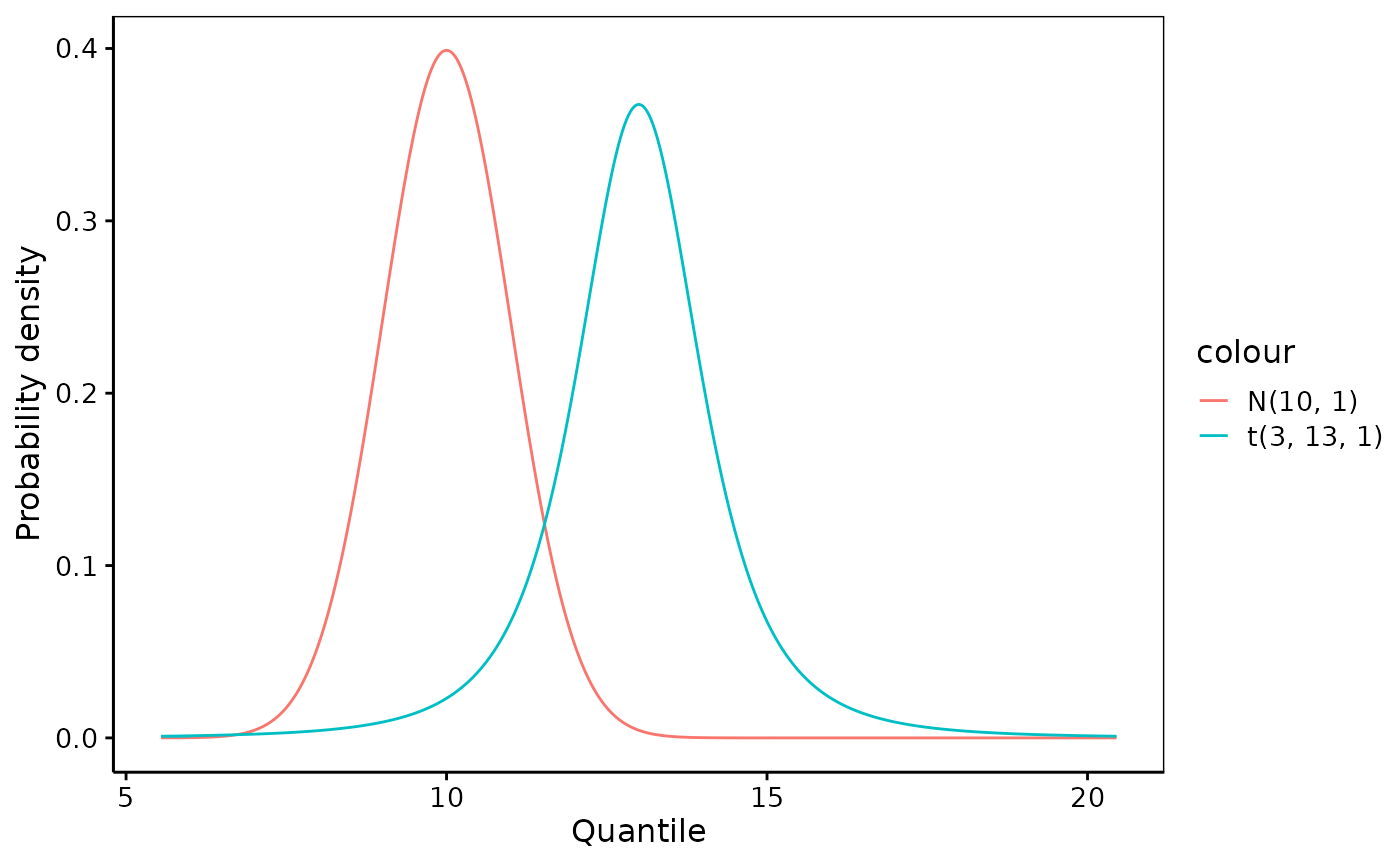 chart$cumulative(di2)
chart$cumulative(di2)
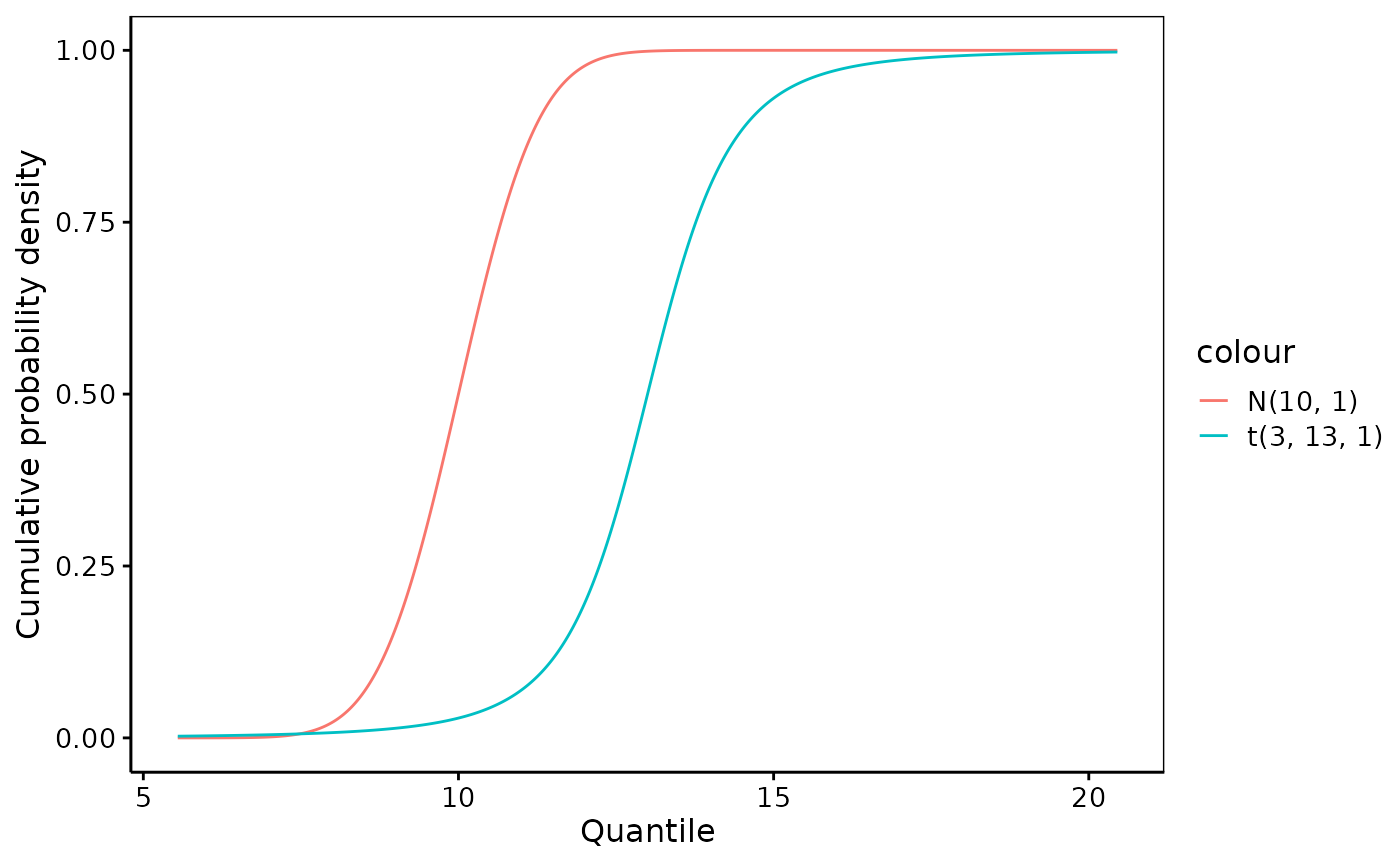 # A discrete distribution
di3 <- dist_binomial(size = 7, prob = 0.5)
chart(di3)
# A discrete distribution
di3 <- dist_binomial(size = 7, prob = 0.5)
chart(di3)
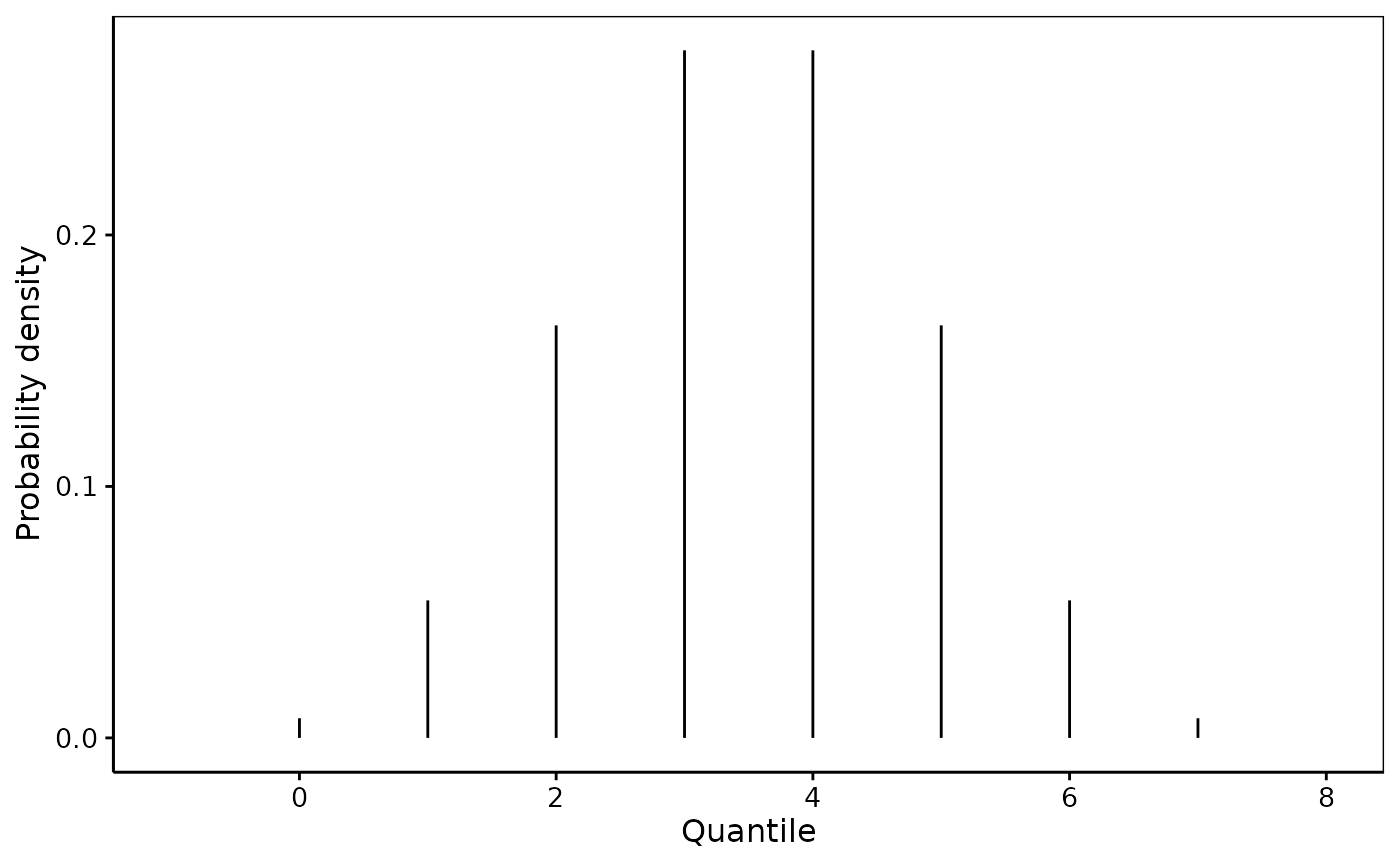 chart$cumulative(di3)
chart$cumulative(di3)
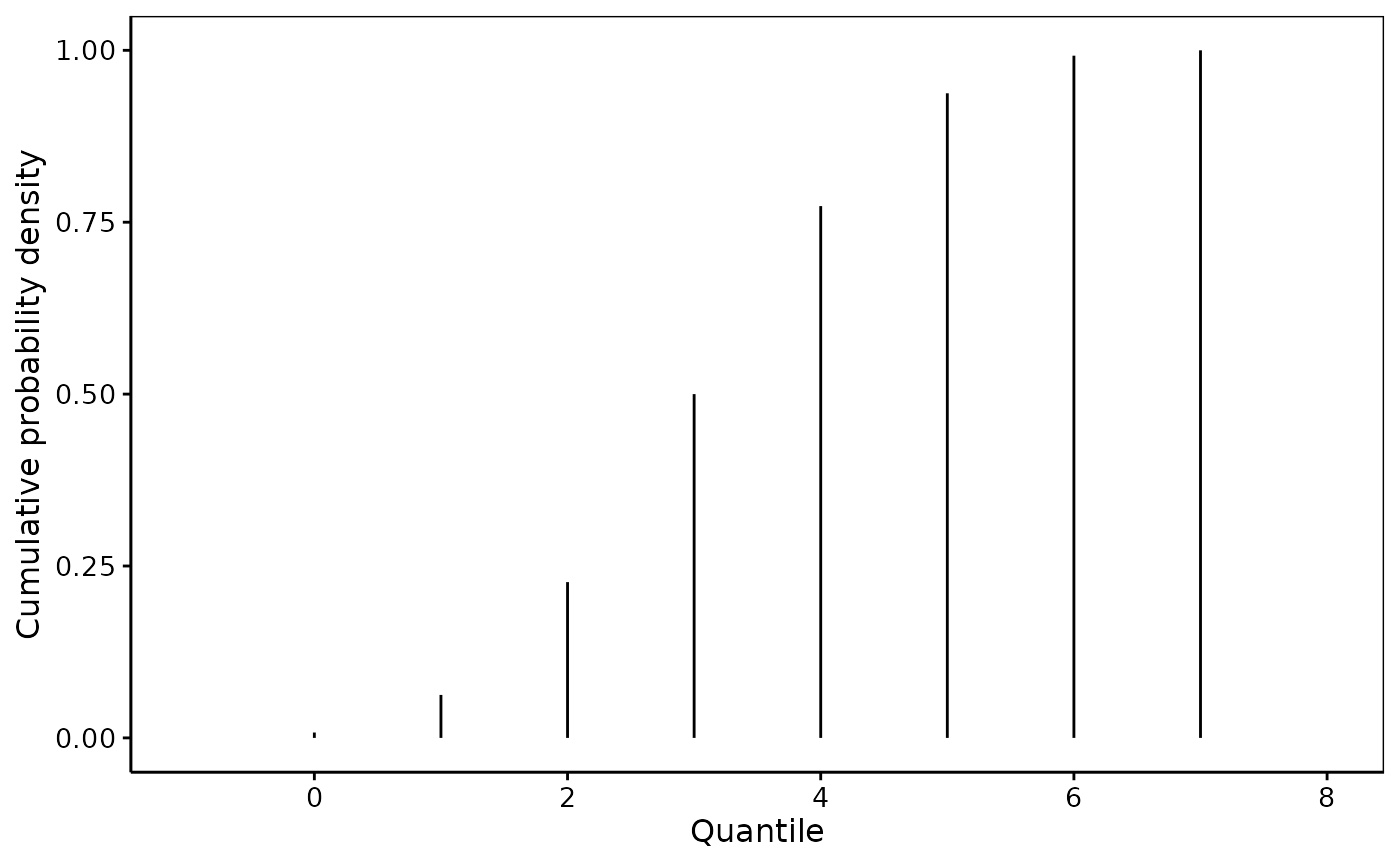 # A continuous together with a discrete distribution
di4 <- c(dist_normal(mu = 4, sigma = 2), dist_binomial(size = 8, prob = 0.5))
chart(di4)
# A continuous together with a discrete distribution
di4 <- c(dist_normal(mu = 4, sigma = 2), dist_binomial(size = 8, prob = 0.5))
chart(di4)
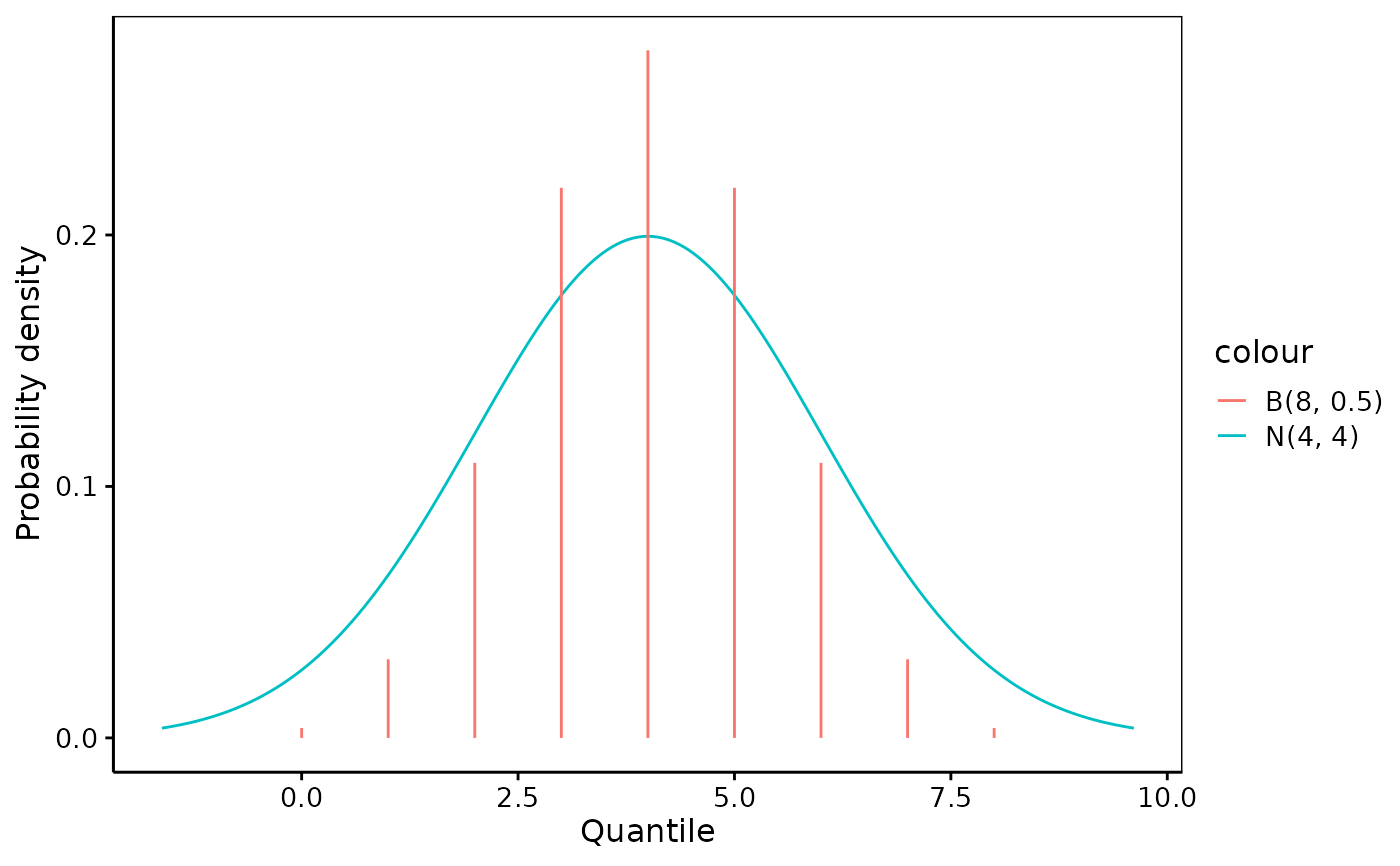 chart$cumulative(di4)
chart$cumulative(di4)
